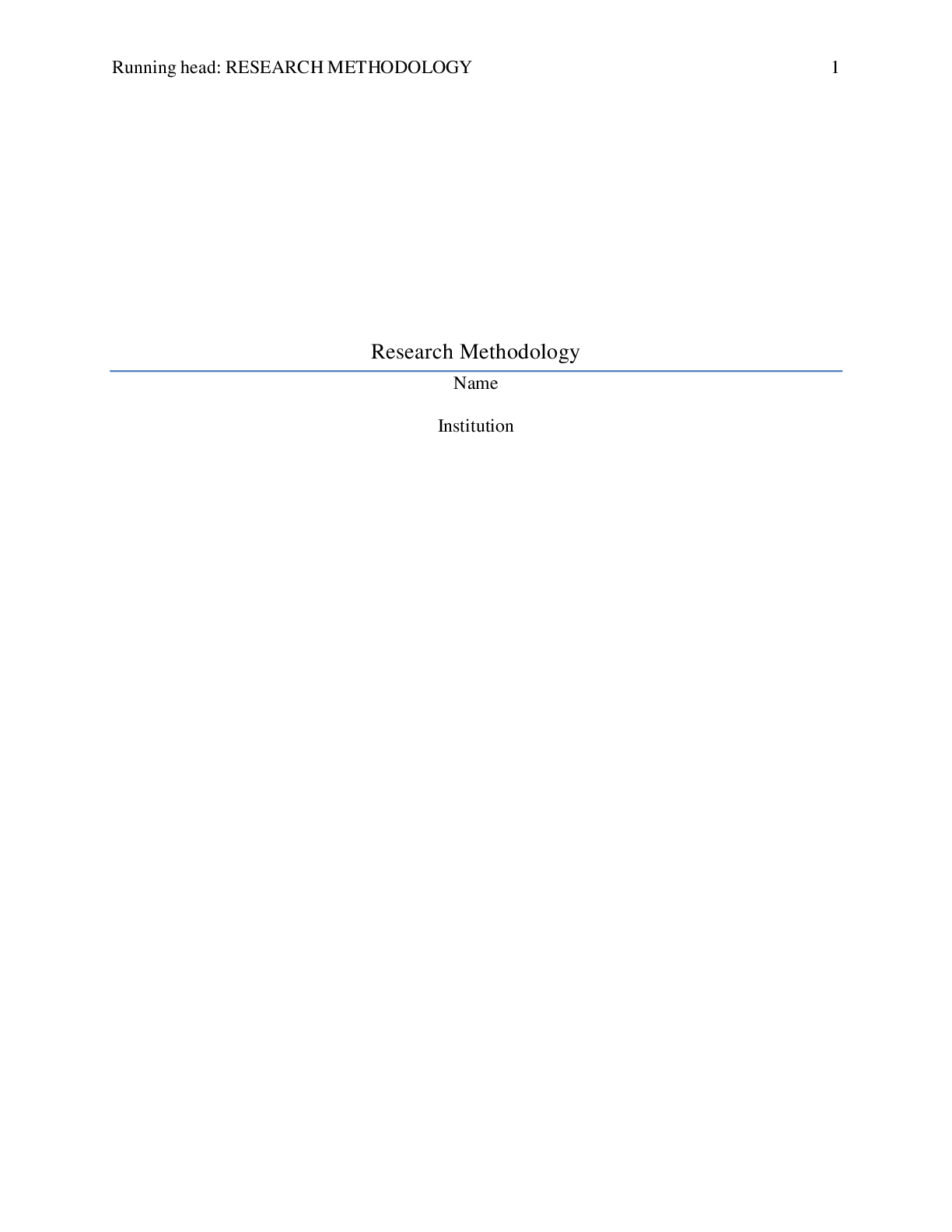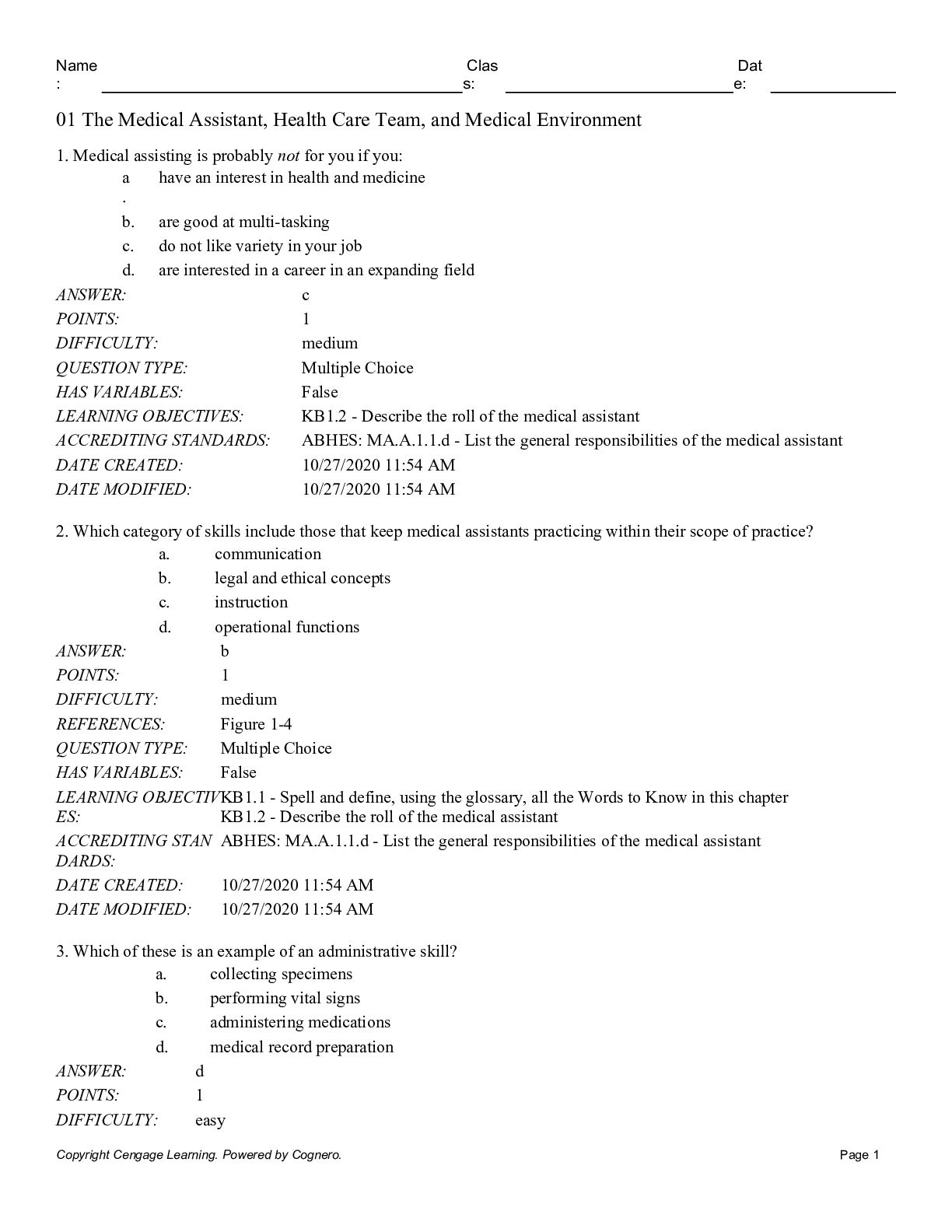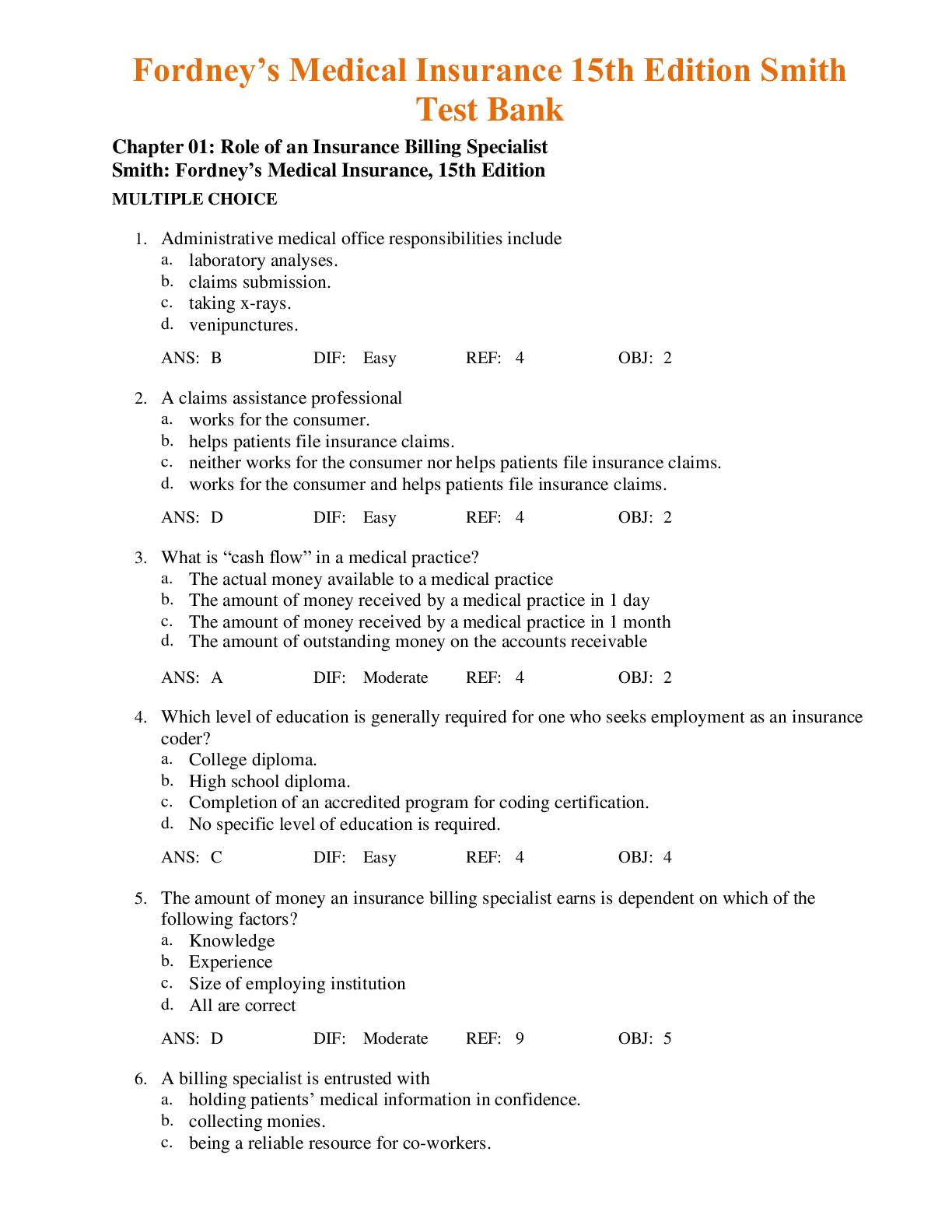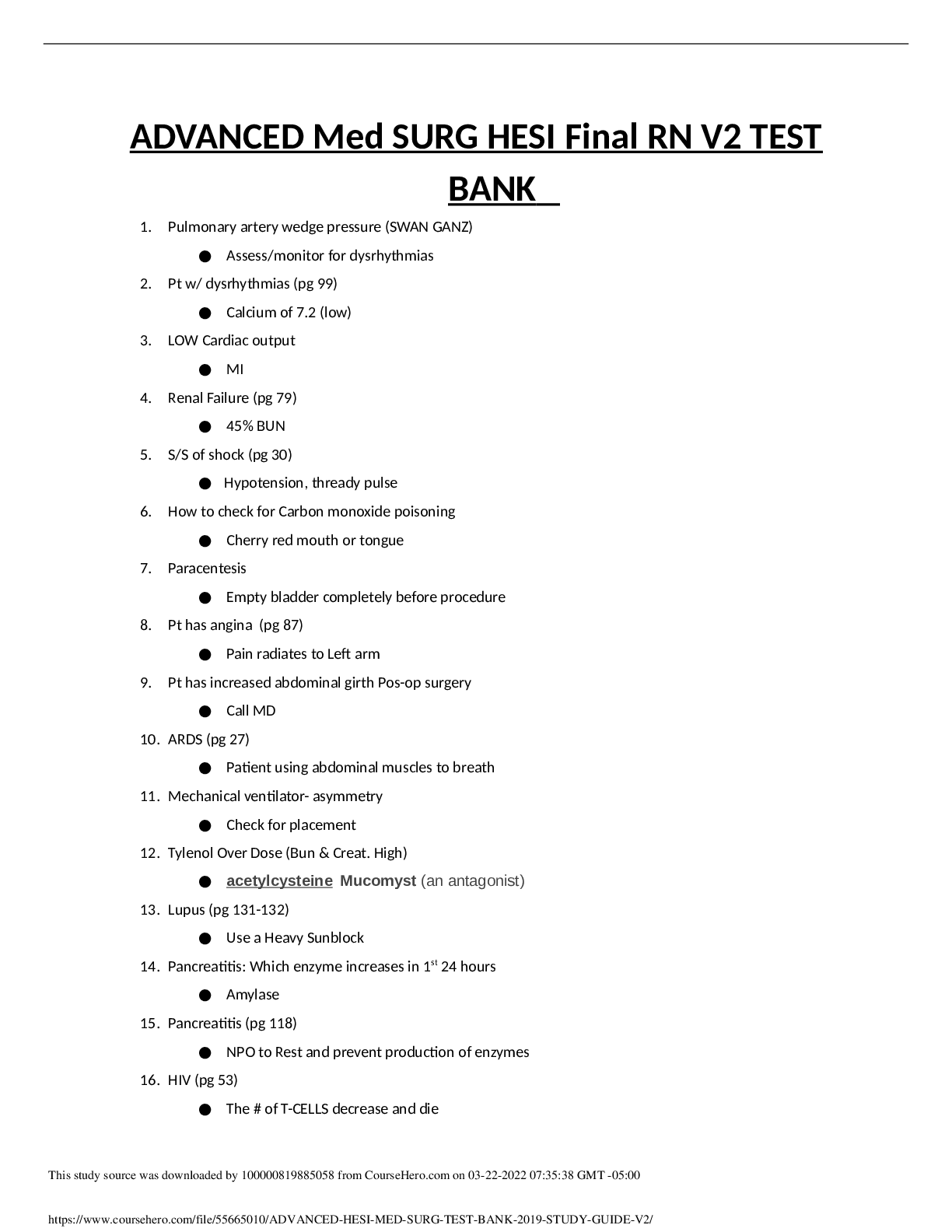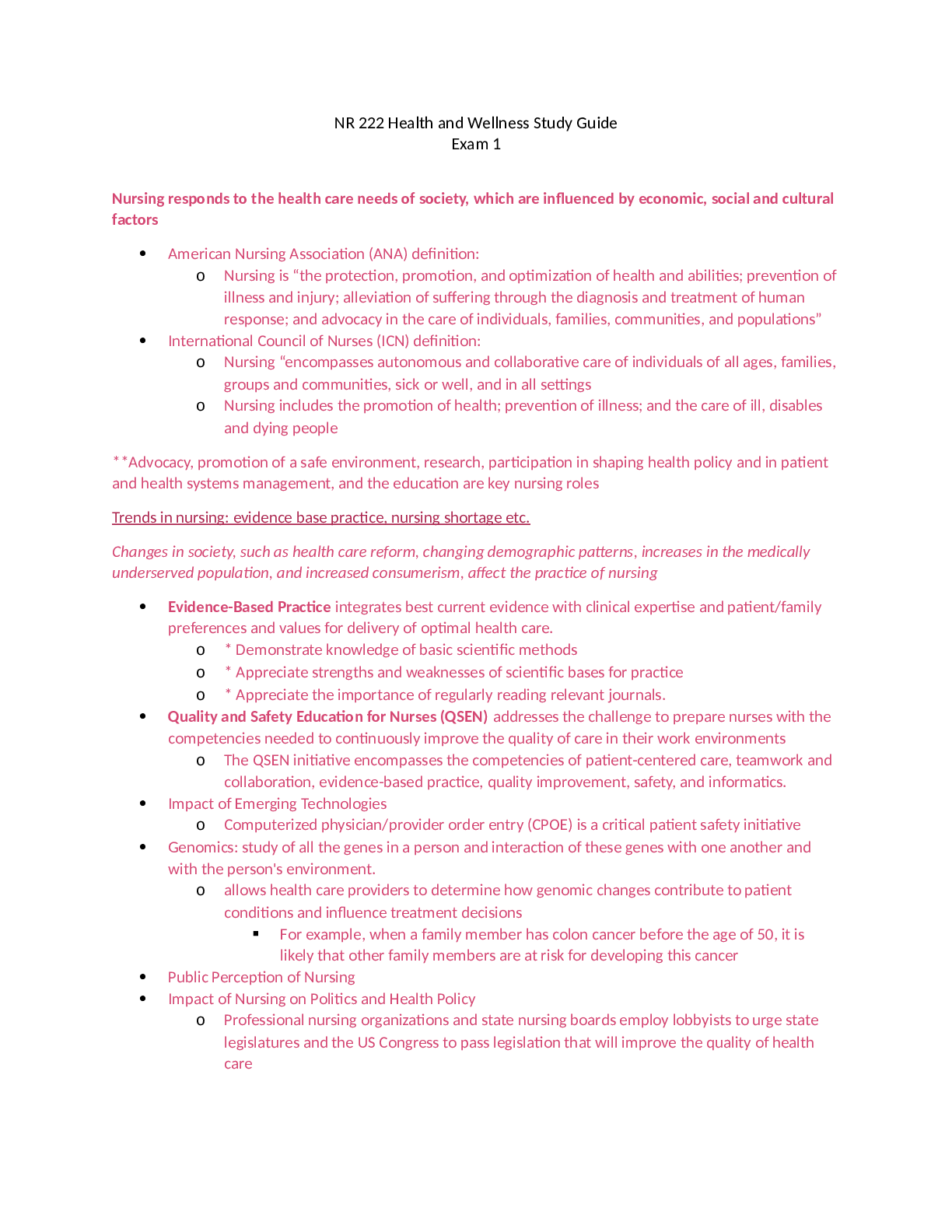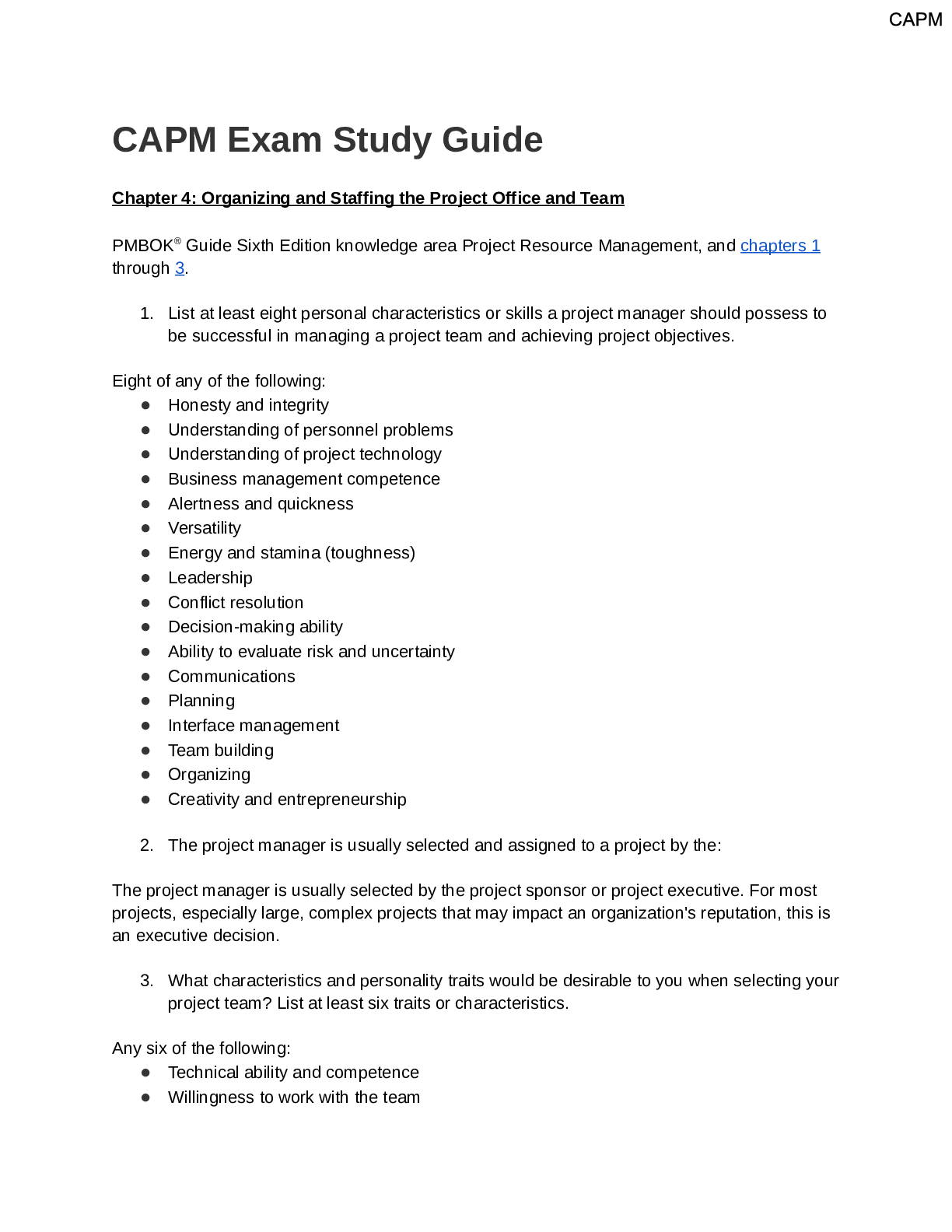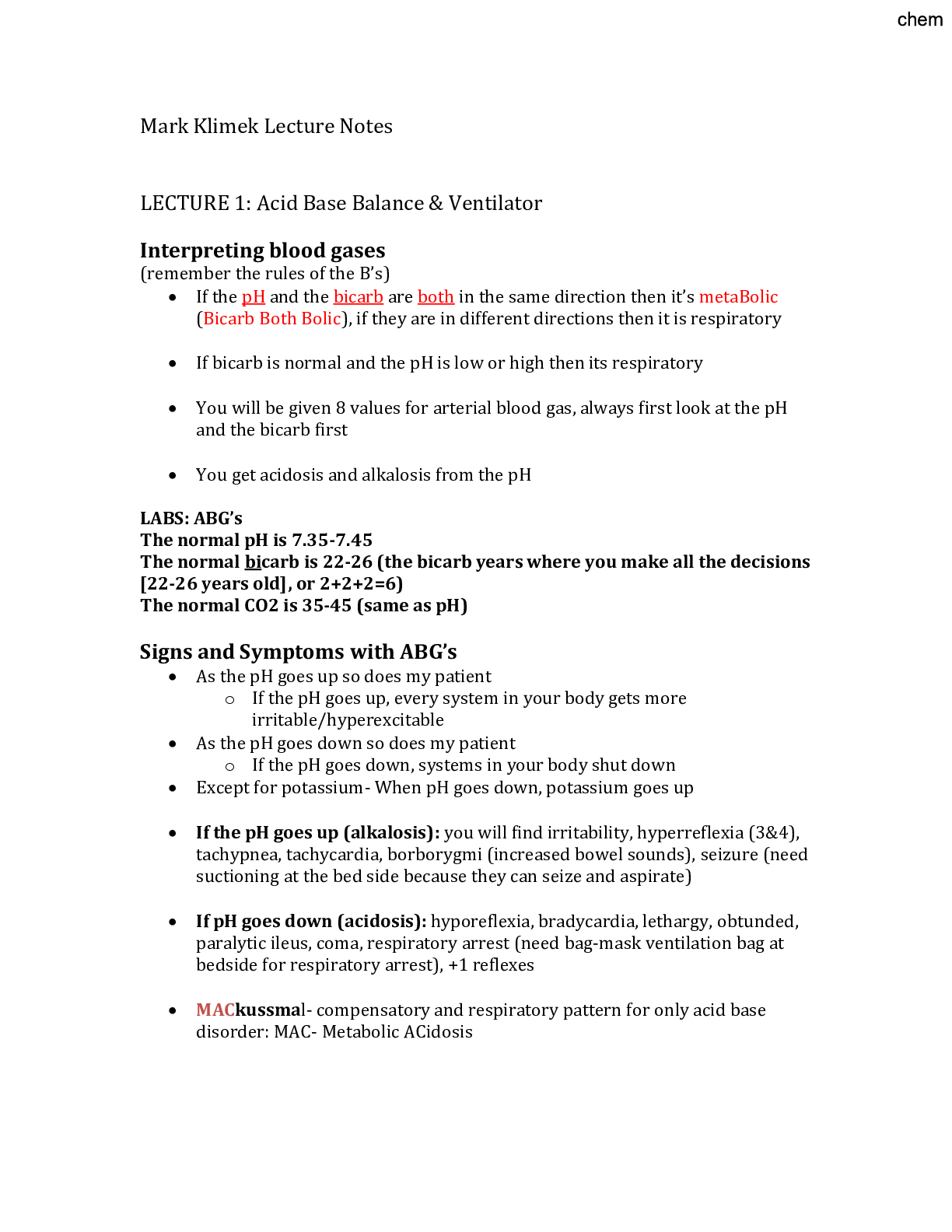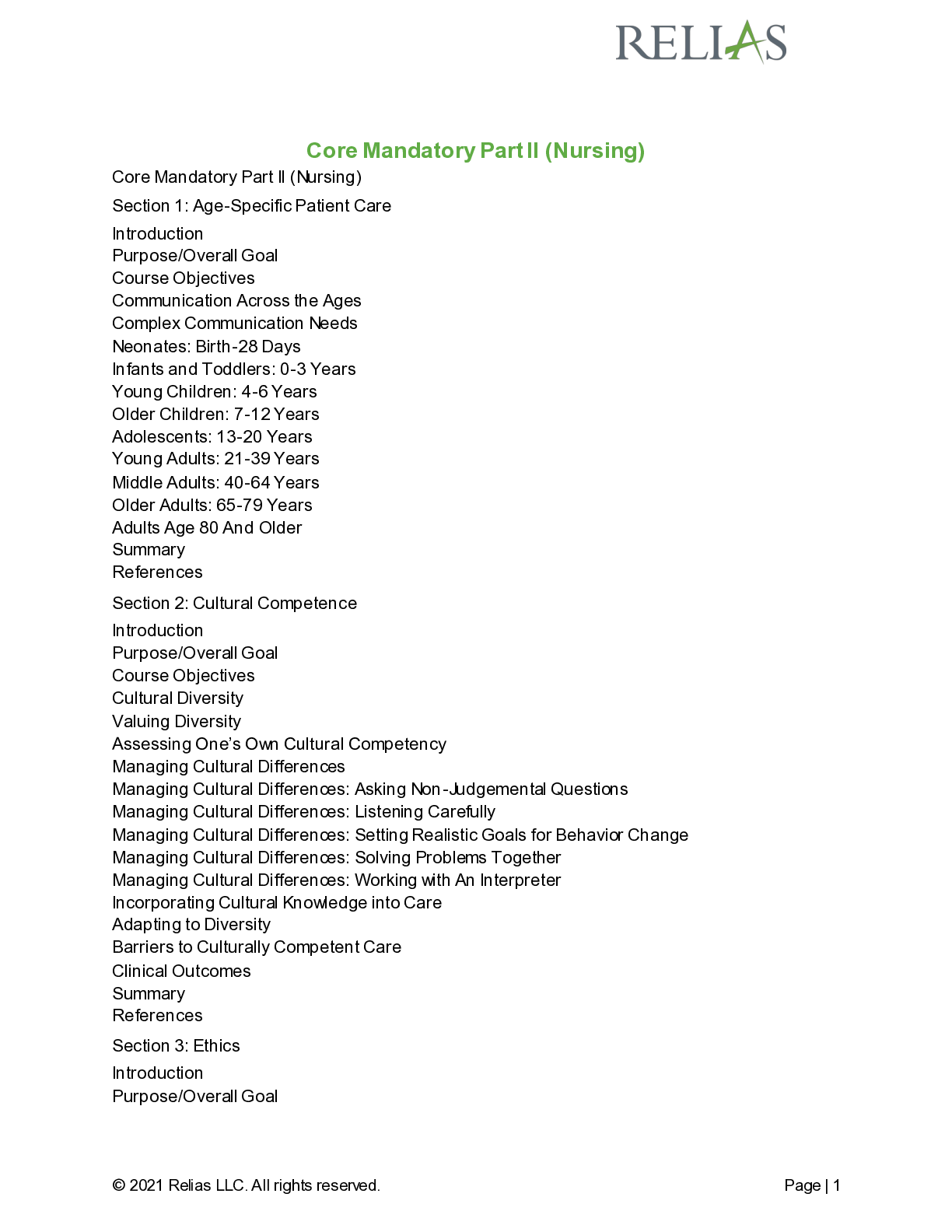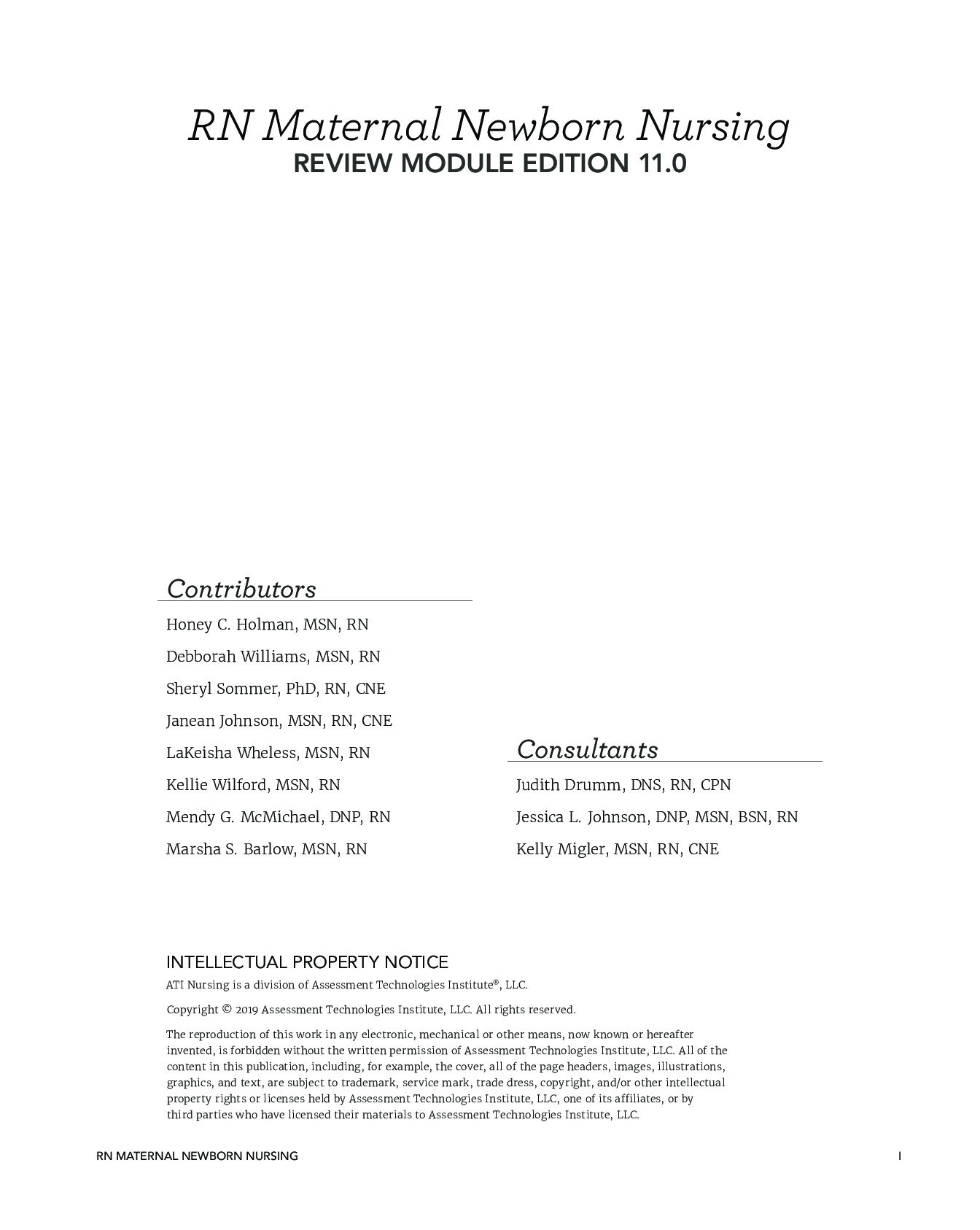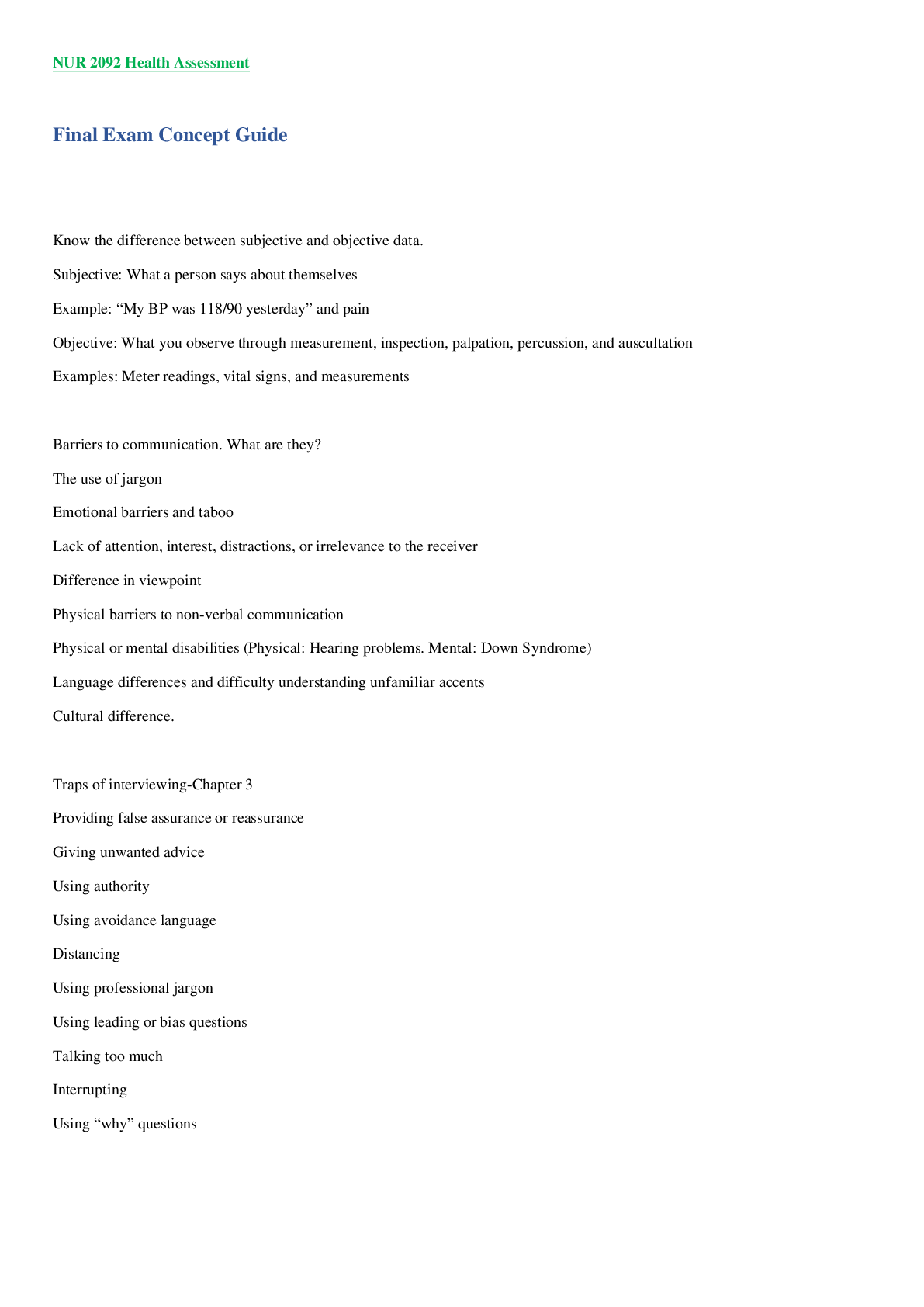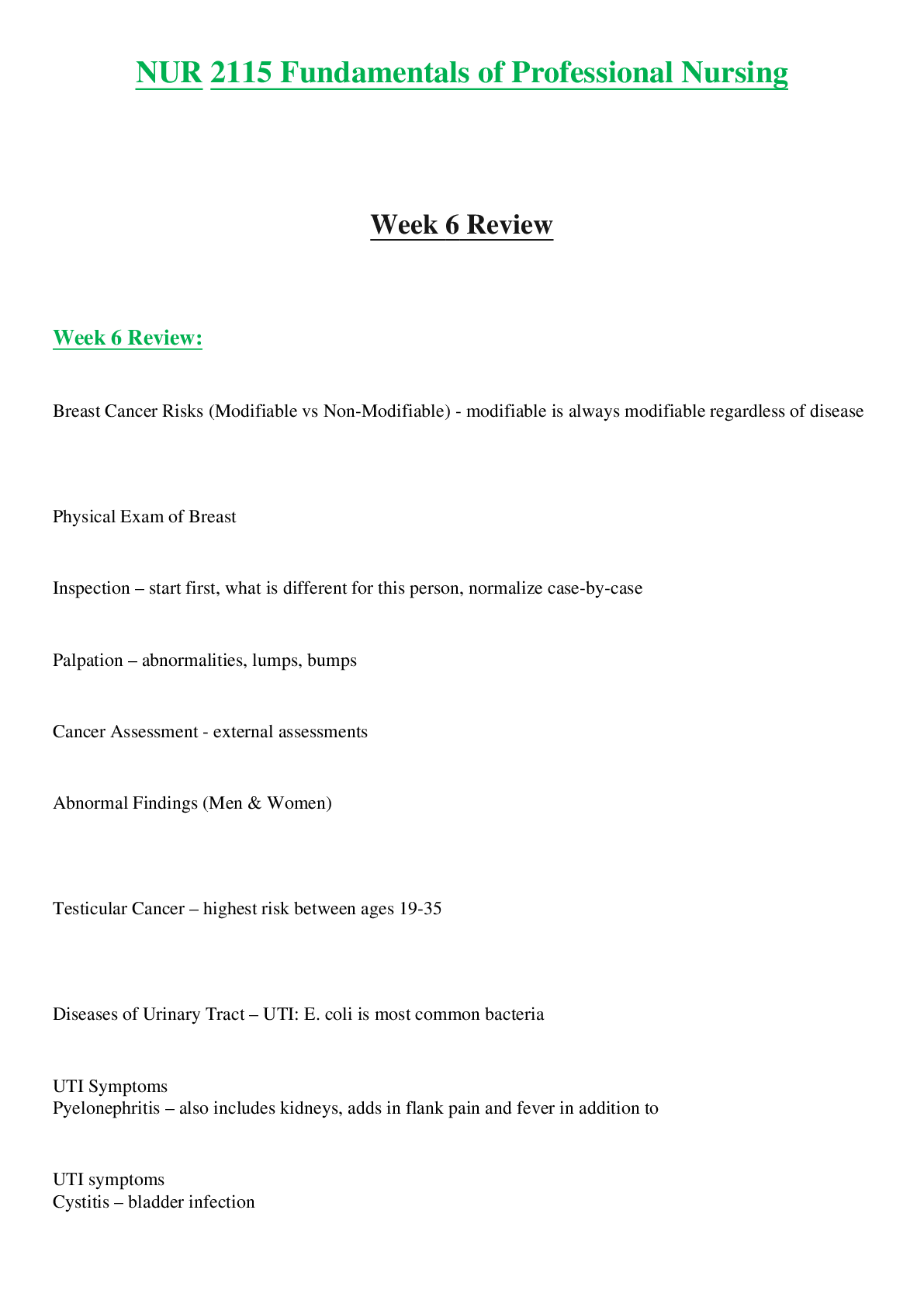ATI Fundamentals Protcored Exam Review
Document Content and Description Below
Nursing Process- ATI Fundamentals Ch. 7
Assessment/ Data Collection
Pt. interview
Medical history
Physical assessment
Lab reports
S/S, feelings
Objective data �
...
� VS
Analysis
ID pt. health status
Recognize trends and patterns
Planning
Nurse initiated/Independent Interventions
Provider-Initiated/Dependent interventions
Collaborative interventions
Establish priorities
Implementation
Base care according to data and plan of care
Use problem-solving and critical thinking
Minimize risks
Implement nursing action based on delegation
Evaluation
Evaluate client responses to interventions for form clinical judgement
See if goals are met
Determine effectiveness of nursing care plan
Practice Question: A nurse is discussing the nursing process with a newly hired nurse. Which of the
following statements by the newly hired nurse should the nurse identify as appropriate for the
planning step of the nursing process?
A. “I will determine the most important client problems that we should address.”
B. “I will review the past medical history on the client’s record to get more information.”
C. “I will go carry out the new prescriptions from the provider.”
D. “I will ask the client if his nausea has resolved.”
Practice Question: By the second postoperative day, a client has not achieved satisfactory pain
relief. Based on this evaluation, which of the following actions should the nurse take, according to
the nursing process?
A. Reassess the client to determine the reasons for inadequate pain relief.
B. Wait to see whether the pain lessens during the next 24 hr.
C. Change the plan of care to provide different pain relief interventions.
D. Teach the client about the plan of care for managing his pain
Medical and Surgical Sepsis- ATI Fundamentals Ch. 10
Hand Hygiene PRIMARY BEHAVIOR!!!!!!
3 essential components (at least 15 seconds and up to 2 minutes if more soiled)
Soap
Water
Friction
Must perform hand hygiene with either soap and water or alcohol-based product
Alcohol based amount- usually 3-5mLs (rub until completely dry)
If visible soiled= soap and water (2 min)
Perform hand hygiene using recommended antiseptic solutions for immunocompromised or
multi-drug resistant micro-organisms
Personal Protective Equipment (PPE):
Put on (or Don): Gown Mask Googles Gloves
Take off (or Doff): Gloves Googles Gown Mask
Physical Environment:
Do not place items on the floor (even soiled laundry)
Do not shake linens can spread microorganisms in the air
Keep from touch clothing keep away from you
Clean LEAST soiled areas FIRST
Use plastic bags for moist, soiled items
Place specimens in biohazard containers
Maintaining a Sterile Field:
Prolonged exposure to airborne micro-organisms can make sterile items nonsterile.
Avoid coughing, sneezing, and talking directly over a sterile field.
Ask patients to refrain from touching supplies
Only sterile items may be in a sterile field.
The outer wrappings and 1-inch edges of packaging that contains sterile items are not
sterile.
Touch sterile materials only with sterile gloves
Microbes can move by gravity from nonsterile item to a sterile item.
Do not reach across or above a sterile field.
Do not turn your back on a sterile field.
Hold items to add to a sterile field at a minimum of 6 inches above the field.
Any sterile, non-waterproof wrapper that encounters moisture becomes nonsterile
Keep all surfaces dry.
Discard any sterile packages that are torn, punctured, or wet.
Sterile Filed set up:
First open flap or wrapper of packaging AWAY from you
Next open SIDE flaps
Last open last flap TOWARD your body
Practice Question: A nurse is wearing sterile gloves in preparation for performing a sterile
procedure. Which of the following objects can the nurse touch without breaching sterile
technique? (Select all that apply.)
A. a bottle containing a sterile solution
B. The edge of the sterile drape at the base of the field
C. The inner wrapping of an item on the sterile field
D. An irrigation syringe on the sterile field
E. One gloved hand with the other gloved hand
Infection Control- ATI Fundamentals Ch. 11
Modes of transmission
Contact
Direct contact- person to person
Indirect contact- inanimate object to person
Fecal-oral transmission- handling food without washing hands after using a restroom
and failing to wash hands
Droplet
Sneezing, coughing, and talking
Airborne
Sneezing and coughing
Vector-borne
Animal or insects (such as ticks with Lyme disease, mosquitos with West Nile Virus and
Malaria)
Chain of Infection
Causative Agent Reservoir Portal of Exit Mode of Transmission Portal of entry
Susceptible host
Stages of Infection
Incubation interval b/w pathogen entering the body and presentations of first finding
Prodromal interval of onset of general findings to more distinct findings; pathogen
multiplies
Illness interval when findings specific to the infection occur
Convalescence recovery
Isolation Precautions
Change PPE after contact with each client and between procedures with the same client
Standard Precautions (Tier 1)
Applies to all body fluids (except sweat), non-intact skin, and mucous membranes
Perform hand hygiene ALWAYS!!!!
Transmission Precautions (Tier 2)
Airborne precautions
Private room, masks and respiratory devices, negative pressure airflow exchange
T- N95 or high-efficiency particulate air (HEPA) respirator
Wear mask while outside of room
Measles, Varicella, TB
Droplet precautions
Droplets larger than 5 mcg and travel 3-6 ft
Haemophilus influenzae B, Rubella, Pertussis, Scarlet fever, mumps, mycoplasma
pneumonia, sepsis
Private room with client with same infection
Masks for providers and visitors
Wear mask outside of room
Contact precautions
Within 3 ft of client against direct and environmental contact
RSV, Shigella, Herpes simplex, impetigo, Scabies, multi-drug resistant organisms-MRSA,
enteric organisms- C-Diff (From GI)
Private room with other clients with same infection
Gloves and gown worn by caregivers and visitors
Protective precautions
To protect clients who are immunocompromised: stem cell transplant, chemo
Private room
Positive airflow 12 or more air exchanges/hr.
HEPA filter for incoming air
Mask for when patient is out of the room
Multidrug-resistant Infection:
Methicillin- resistant Staphylococcus aureus- MRSA
Resistant to many antimicrobials
Vancomycin and linezolid are used to treat MRSA
Vancomycin-resistant Staphylococcus aureus- VRSA
Resistant to Vancomycin
Other antimicrobials will work based on the specific strain
Herpes Zoster (Shingles)
Viral Infection
Initially produced by chicken pox after which the virus remains dormant
Re-activated as Shingles later in life
Has a prodromal period:
Pain- unilateral and extends horizontally along a dermatome
Tingling
Burning
Shingles may be very debilitating and painful
Older adults are more susceptible to herpes zoster
Nursing Care:
Assess pain, lesions, presence of fever, neuro. complications, signs of infection
Use air mattress or bed cradle for pain prevention to affected areas
Isolate the client until the vesicles have crusted over
Maintain strict wound care precautions
Avoid exposing client to infants, pregnant women who have not had chicken pox,
immunocompromised clients
Anyone who has not had chicken pox and have not been vaccinated is at risk
Administer analgesics- NSAIDS, narcotics
Administer antiviral agents- acyclovir can shorten the course
Monitor for complications of Postherpetic neuralgia- pain lasting longer than 1 month
[Show More]
Last updated: 3 years ago
Preview 1 out of 31 pages
